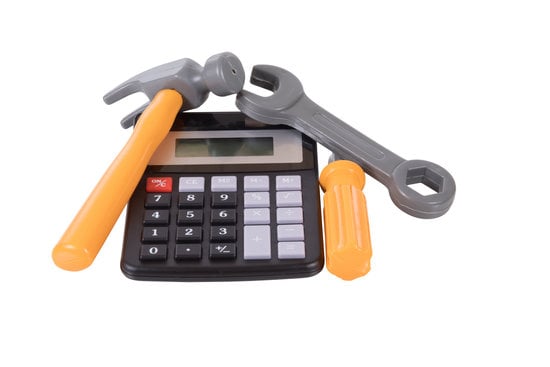When it comes to making improvements to your home, you may wonder if the IRS checks how much you spent. Understanding the regulations and guidelines set by the IRS for home improvement expenses is crucial for homeowners.
This article aims to provide clarity on what counts as a home improvement, the importance of accurate record-keeping, IRS regulations on deductibility, tax implications, qualifying for tax credits, potential consequences of improper reporting, and tips for maintaining compliance. By having a clear understanding of these topics, homeowners can navigate the complexities of reporting their home improvement expenses correctly and avoid potential penalties.
Many individuals mistakenly assume that any expense related to improving their home will automatically qualify as a deductible expense. However, the IRS has specific guidelines for what qualifies as a true “home improvement.” It is essential to understand these guidelines to determine which expenses can be deducted and which cannot. By doing so, individuals can ensure they are not overestimating their eligible deductions or claiming inappropriate expenses.
One aspect that cannot be emphasized enough when it comes to reporting home improvement expenses is the significance of keeping accurate records. Detailed documentation is vital in proving the nature and amount of costs incurred.
From receipts and invoices to contractor agreements and before-and-after photos, maintaining thorough records will protect homeowners in case of an audit or inquiry from the IRS. This section explores why meticulous record-keeping is necessary throughout any home improvement project and explains what types of documentation should be kept on file.
Understanding what counts as a home improvement
When it comes to home improvement expenses, it is crucial to understand what counts as a home improvement according to IRS guidelines. This knowledge is essential for homeowners who want to ensure they are accurately reporting their expenses and potentially claiming deductions or credits.
According to the IRS, a home improvement is defined as any project that adds value to your home, prolongs its useful life, or adapts it to new uses. This can include renovations, repairs, remodels, additions, or even the installation of energy-efficient upgrades. However, routine maintenance and repairs that are necessary for the general upkeep of your home do not typically qualify as home improvements.
To determine whether an expense can be considered a home improvement, the IRS looks at several factors including the nature of the work performed and its effect on the value or usefulness of the property. For example, replacing a roof or upgrading your kitchen would likely be considered a home improvement because these projects increase both the value and functionality of your home.
It’s important for homeowners to keep in mind that not all expenses incurred during a home improvement project may be eligible for tax benefits. For example, furniture purchased for a newly remodeled room would not be considered a home improvement expense. To ensure accurate reporting and maximize potential deductions or credits, it is wise to consult with a tax professional or refer directly to IRS guidelines.
| Expense Type | Tax Deductible? |
|---|---|
| Replacing roof | Yes |
| Upgrading kitchen | Yes |
| Purchasing new furniture for remodeled room | No |
| Repairing a leaky faucet | No |
| Painting a room | No |
Importance of keeping accurate records
Keeping accurate records of home improvement expenses is crucial for a variety of reasons. It not only helps ensure compliance with IRS regulations but also allows homeowners to accurately calculate their tax liability and potentially maximize their deductions or credits. The IRS requires taxpayers to maintain detailed documentation to support any claims related to home improvement expenses. Failure to do so can result in potential penalties or the disallowance of deductions.
When it comes to maintaining accurate records, it’s important to include essential information such as receipts, invoices, contracts, and before-and-after photos. These documents serve as evidence for the amount spent on home improvements and the nature of the work performed. Additionally, homeowners should keep track of any permits obtained for the renovations.
| Documentation | Description |
|---|---|
| Receipts and Invoices | These documents should clearly state the name of the contractor or supplier, date of payment, description of services or materials provided, and the amount paid. |
| Contracts | A copy of any signed contracts outlining the scope of work and agreed-upon costs should be kept. |
| Before-and-After Photos | Photographic evidence showing the condition of the property before and after improvements can be valuable in demonstrating the extent and nature of the renovations. |
| Permits | Records indicating whether any necessary permits were obtained for specific types of home improvement projects demonstrate compliance with local building codes. |
By keeping thorough records, homeowners can not only accurately report their home improvement expenses to the IRS but also have the necessary documentation to support their claims in case of an audit. It is advisable to organize these records in a systematic manner and retain them for at least three years after filing the tax return. Failing to maintain accurate records may result in lost deductions or credits, additional tax liability, and potential penalties imposed by the IRS.
IRS regulations on deductibility
Definition of Home Improvement
Before delving into the IRS regulations on deductibility, it is important to have a clear understanding of what constitutes a home improvement. According to the IRS guidelines, a home improvement must “add value to your home, adapt it to new uses, or prolong its useful life.” This definition includes various types of renovations, repairs, and additions that enhance the functionality or aesthetics of your property.
Examples of home improvements that may qualify for tax deductions include the addition of a new room, installation of new roofing or flooring, upgrading plumbing or electrical systems, and adding energy-efficient features such as solar panels or insulation. It is important to note that routine maintenance tasks like painting walls or fixing leaks do not qualify as home improvements in the eyes of the IRS.
Qualifying for Deductions
The IRS has established certain criteria that must be met in order for home improvement expenses to be eligible for deductions. Firstly, the improvement must be made on your primary residence or a property you own and use as a second home. Additionally, rental properties and investment properties are subject to different rules.
To claim deductions for home improvement expenses, you must itemize your deductions using Form 1040 and Schedule A. You can deduct expenses up to the amount by which they increase the fair market value of your property. For example, if you spent $20,000 on a kitchen renovation and it increased your home’s value by $15,000 according to an appraisal report, you may only deduct $15,000.
It is crucial to keep accurate records including invoices from contractors, receipts for materials purchased, permits obtained (if applicable), and any other supporting documentation related to your home improvements. These records will help substantiate your claims in case of an audit by the IRS.
Limitations on Deductions
While many homeowners might hope for generous tax deductions for their home improvement expenses, it is important to understand the limitations set by the IRS. Generally, the amount you spend on luxurious or extravagant improvements that exceed the reasonable cost for your area will not be fully deductible. For instance, if you decide to install a lavish swimming pool in an average neighborhood, only a portion of the expenses may be eligible for deduction.
It is also worth noting that if you use a home equity loan or line of credit to finance your home improvement project, you may be subject to additional limitations on deductions. The Tax Cuts and Jobs Act of 2017 changed some rules regarding interest deductibility for home equity debt, so it is advisable to consult with a tax professional or refer to IRS guidelines for specific details.
Understanding IRS regulations on deductibility is crucial for homeowners embarking on home improvement projects. By staying informed about the criteria set by the IRS and keeping detailed records of expenses, homeowners can ensure they accurately report their deductions while avoiding penalties and risks associated with improper reporting.
Determining the tax implications
Understanding the tax basis of your home
Before diving into the tax implications of home improvements, it is crucial to understand the concept of tax basis. The tax basis of your home refers to its value for tax purposes. It includes the original purchase price, certain closing costs, and any permanent improvements made to the property. When calculating the gain or loss on the sale of a property, the IRS considers the difference between the selling price and this tax basis.
Capital expenses vs. repairs
It is essential to distinguish between capital expenses and repairs when determining the tax implications of home improvements. Capital expenses are considered significant investments that increase the value or prolong the life of your property. These can be fully deducted in certain situations or used to adjust your home’s tax basis.
On the other hand, ordinary repairs that are necessary for maintaining your property’s condition are not considered capital expenses and do not impact your home’s tax basis. While they may not provide any immediate deduction benefits, these repair expenses can still be claimed under different IRS provisions.
Potential deductions and credits
The amount spent on qualifying home improvements can potentially result in deductions or credits that impact your overall tax liability positively. Deductions reduce your taxable income, while credits reduce your actual taxes owed dollar-for-dollar.
For instance, if you use a part of your home exclusively for business purposes after completing eligible improvements, you may qualify for a deduction based on that portion’s square footage relative to your total living area.
Additionally, certain energy-efficient upgrades like installing solar panels or energy-efficient windows may make you eligible for federal tax credits. These credits directly reduce your federal income taxes for specific percentages of qualified expenditures.
Understanding how different types of home improvements can affect your taxes ensures that you make informed decisions and maximize the potential benefits available to you. It is advisable to consult with a tax professional or refer to the IRS guidelines for specific details on deducting or claiming credits for home improvement expenses. Compliance with these regulations contributes to accurate reporting and reduces the risk of penalties or audits by the IRS.
Qualifying for tax credits
When it comes to home improvements, not only can you potentially increase the value and comfort of your home, but you may also be eligible for tax credits from the IRS. These tax credits can help offset the costs of qualifying home improvement projects. It’s important to explore and understand these potential tax credits in order to maximize any possible financial benefits.
The IRS offers tax credits for specific types of home improvements that promote energy efficiency and environmental sustainability. These tax credits are designed to encourage homeowners to make eco-friendly upgrades that reduce energy consumption and reliance on non-renewable resources. Some common examples of qualifying home improvements include:
- Installation of solar panels or solar water heaters
- Upgrading insulation in walls, attics, and floors
- Replacement of old windows and doors with energy-efficient ones
- Installation of geothermal heat pumps or wind turbines
It’s important to note that each type of improvement has specific eligibility requirements in order to qualify for the tax credit. For example, when installing solar panels or solar water heaters, they must meet certain performance criteria certified by a qualified professional or organization. Documentation proving compliance with these requirements should be retained as part of your records for tax purposes.
To claim these tax credits, you will need to complete Form 5695 along with your federal income tax return. The amount of the credit varies depending on the specific improvement type and its associated costs. It’s crucial to keep accurate records of your expenses related to these home improvements in order to provide evidence when claiming the credit.
Potential consequences of improper reporting
When it comes to reporting home improvement expenses to the IRS, it is crucial to understand the potential consequences of improper reporting. Underreporting or overreporting home improvement expenses can lead to penalties and risks that may have serious financial implications. It is important for taxpayers to be aware of these consequences in order to avoid any unnecessary complications.
One potential consequence of improper reporting is the possibility of being audited by the IRS. If your reported home improvement expenses raise red flags or seem suspicious, you may be selected for an audit. During an audit, the IRS will thoroughly examine your records and financial information to ensure accuracy and compliance with tax laws. This can be a time-consuming and stressful process, potentially resulting in additional penalties and interest if discrepancies are found.
Additionally, underreporting or overreporting home improvement expenses can also lead to inaccurate tax liabilities. If you underreport your expenses, you may not be able to claim all the deductions you are entitled to, resulting in a higher tax liability than necessary.
On the other hand, if you overreport your expenses, it could trigger an inflated deduction that reduces your tax liability more than allowed by law. Both scenarios can result in incorrect tax calculations and potentially much higher taxes owed or larger refunds received than legally permitted.
To avoid these potential consequences, taxpayers must ensure accurate reporting and evidence of their home improvement expenses. Here are some tips for maintaining compliance:
- Keep detailed records: Make sure to keep invoices, receipts, contracts, and any supporting documents related to your home improvement projects. These records will serve as evidence of the amounts spent and the nature of the improvements made.
- Separate personal from business: If you use part of your home for business purposes, it is important to keep separate records for personal versus business-related home improvements. This will help distinguish between deductible business expenses and non-deductible personal ones.
- Consult a tax professional: If you are uncertain about the rules and regulations surrounding home improvement expenses, it is always a good idea to consult with a tax professional. They can provide guidance and ensure that you are accurately reporting your expenses according to IRS guidelines.
By understanding the potential consequences of improper reporting and following these tips for compliance, taxpayers can avoid unnecessary penalties and risks associated with underreporting or overreporting home improvement expenses. It is essential to maintain accurate records and seek professional advice when needed to ensure compliance with IRS regulations.
Tips for maintaining compliance
Maintaining compliance with IRS regulations regarding home improvement expenses is crucial to avoid penalties and ensure accurate reporting. To help homeowners navigate these regulations, here are some practical tips for maintaining compliance and providing accurate evidence of home improvement expenses.
Firstly, it is essential to keep detailed records of all expenses related to home improvements. This includes receipts, invoices, contracts, and any other relevant documents. Organize these records in a systematic manner so that they can be easily accessed when needed. Additionally, make sure to record the date of each expense, as well as the specific nature of the improvement being made.
Another important tip is to separate personal expenses from home improvement expenses. If you are conducting both personal and home improvement projects at the same time, it is crucial to allocate the costs appropriately. Keep separate bank accounts or credit cards for these different categories to eliminate any confusion or commingling of funds. By doing this, you can clearly demonstrate to the IRS which expenses are directly related to home improvements.
Additionally, consider seeking professional advice when it comes to understanding IRS regulations on deductibility and tax credits for home improvements. A tax professional familiar with these rules can provide valuable guidance in maximizing your deductions while staying within the bounds of the law.
Lastly, be mindful of any applicable deadlines for reporting and filing taxes related to your home improvements. Stay informed about changes in tax laws that may affect deductibility or credits for certain types of improvements. Regularly review your records and consult with a tax professional if needed to ensure that you are accurately reporting your expenses and taking advantage of any available benefits.
By following these practical tips, homeowners can maintain compliance with IRS regulations on home improvement expenses. Remember that accurate reporting and evidence are vital not only to avoid penalties but also to maximize potential deductions and credits that may reduce your overall tax liability.
Conclusion
In conclusion, understanding IRS regulations on home improvement expenses is crucial for homeowners who want to ensure compliance and potentially benefit from tax deductions or credits. Throughout this article, we have explored various aspects of IRS guidelines, including what counts as a home improvement and the importance of keeping accurate records.
One key takeaway from our discussion is that maintaining detailed documentation is essential when it comes to home improvement expenses. The IRS requires homeowners to provide evidence of their expenditures, so keeping receipts, invoices, and other relevant documents is critical. This not only helps with accurate reporting but also serves as a safeguard in case of an audit.
Additionally, we have discussed the tax implications of the amount spent on home improvements. It is important to understand that while not all home improvements are deductible, some may qualify for tax credits. Being aware of these potential tax benefits can help homeowners make informed decisions when planning renovations or upgrades.
Finally, it should be emphasized that improper reporting of home improvement expenses can lead to penalties and other risks. Underreporting or overreporting can result in audits, fines, or even criminal charges. Therefore, following IRS regulations and seeking professional advice when needed is highly recommended.
To maintain compliance and ensure accurate reporting, homeowners should keep track of their expenses diligently and consult with tax professionals if necessary. By understanding and adhering to IRS regulations regarding home improvements, homeowners can navigate the complexities of taxation while maximizing their potential benefits.
Frequently Asked Questions
How do you prove home improvement to the IRS?
Proving home improvements to the IRS typically involves maintaining thorough records and documentation of any work done. This includes saving receipts, invoices, and contracts related to the improvement project. It is important to keep track of the expenses incurred, such as materials and labor costs.
Additionally, it is advisable to take before and after photographs that clearly demonstrate the changes made to the property. By maintaining organized records and having a clear paper trail, individuals can effectively prove their home improvements to the IRS if necessary.
Do home improvements count on taxes?
Home improvements can potentially have an impact on taxes under certain circumstances. While most home improvements do not directly count towards tax deductions or credits, they can indirectly affect a person’s tax situation by increasing the basis of their property.
The basis refers to the cost of acquiring or improving a property and affects how much taxes one has to pay when selling it. When it comes time to sell a home, these improvements can help reduce any potential taxable profit by increasing the basis price and lowering capital gains tax liability.
How far back can you claim home improvements on taxes?
Generally, a homeowner can claim home improvements on taxes for up to three years prior when filing their tax return in a given year. This means that if someone completed eligible home improvement projects within the past three years but did not previously claim them on their taxes, there may still be an opportunity to do so retroactively.
However, it is crucial to note that certain requirements must be met in order for these expenses to qualify for tax benefits. To know more about what can be claimed and eligibility criteria for retroactive claims, it is advisable to consult with a tax professional or reference current IRS guidelines for accurate information tailored to specific situations.

I’m thrilled to have you here as a part of the Remodeling Top community. This is where my journey as an architect and remodeling enthusiast intersects with your passion for transforming houses into dream homes.





